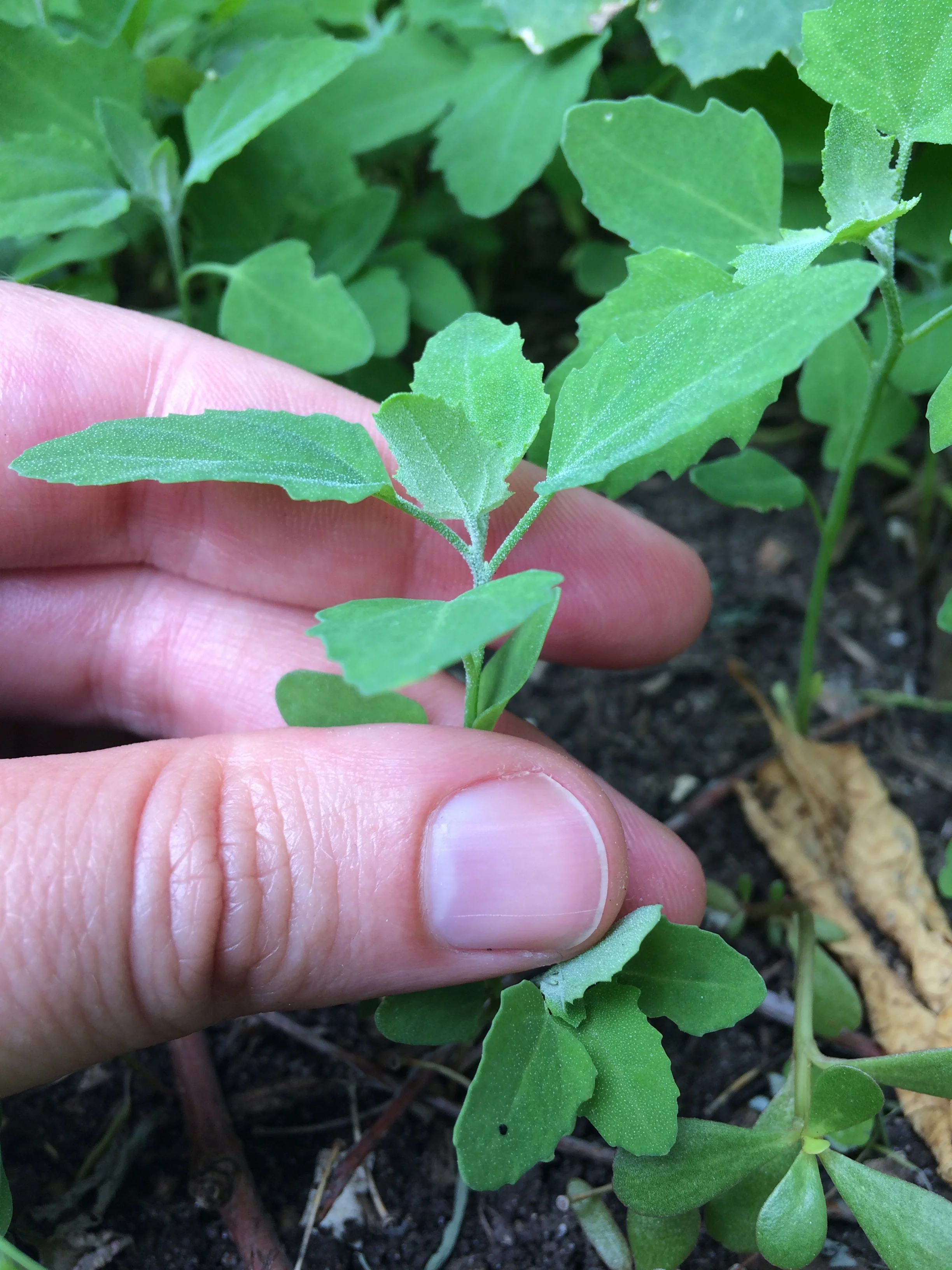Okay, so I know that plums aren't technically a wild food. But there is such a thing as wild plums (Prunus nigra and Prunus americana), and they will be in season soon in the Twin Cities area! Also, I tend to lump gleaning in with foraging. ("Gleaning" is the act of harvesting leftover or second-rate fruits or vegetables from farms or gardens.) And I gleaned these plums from my friends' yard! Furthermore, domesticated plants often grow feral in fields and forests: apples, asparagus, pears, and parsnips are commonly found in the wild. Finally, I think it's silly not to take advantage of an abundant food source strictly because it isn't wild. Falling fruits abound both in urban and rural environments, and I love harvesting them, eating them, and getting other people excited about them! So here you are-- a plum recipe!
Read MoreI love, love, love pickles! But my biggest pickle pet peeve is when they are mushy. I want a pickle that has a crisp texture. That's why I tend toward making refrigerator pickles. They are quick, easy, and since they require no boiling, they come out crisp every time!
Read MoreIn case you missed it, I recently wrote a blog post called Berries Galore, in which I discussed various ways to cook and bake with berries. Among other things, I included directions on making berry-infused vinegar. Well, my red raspberry vinegar is complete, so here are some recipes!
Read MorePretty much everyone knows that red raspberries are edible and choice. But it's not as commonly known that the leaves are medicinal and make a great tea! Some of you have probably seen raspberry leaf sold in co-ops and specialty stores. But why pay $5 for a box of tea when you can pick them for free? Read on to learn how to identify red raspberry bushes before they flower.
Read MoreLamb's Quarters (Chenopodium album) is a common plant found across all of North America and in all fifty states. There exist several varieties; the most common being Chenopodium album var. album, which grows all over the United States and much of Canada, and originated from Eurasia. Some varieties, such as Chenopodium album var. missouriense, are considered native to certain areas in the US. Regardless of the variety, they are all edible and choice! Furthermore, the varieties are similar enough that the following characteristics can be used to identify them all. (In fact, there is debate among taxonomists about whether they are actually just the same species with variable traits.)
But enough of the technicalities! Here's what you need to know to accurately identify the plant.
Read MoreLamb's quarters (Chenopodium album) is commonly found across North America. Often growing in sunny areas in gardens, vacant lots, and roadsides, it is typically thought of as a noxious weed. However, some varieties are actually native to the region. Furthermore, it is a delicious and healthy herb, often compared to spinach in taste and texture, and loaded with vitamins A and C, calcium, potassium, and magnesium! It can be eaten raw, steamed, sautéed, or used like spinach in a recipe. Below is a wild take on a classic recipe: spinach dip.
Read MoreBerry season is here! Whether you buy them from the store, pay to pick them from farms, gather them from wild/feral plants, or do a bit of all three, chances are that they're in abundance. Now is the time to hoard as many as possible!
You may very well be wondering what the point is of amassing large quantities of berries, when you can only eat so many in one sitting and they have a limited shelf life. Well, below are recommendations on how to cook, bake, and preserve berries.
Read MoreMy earliest memory of nettles involves blissfully running through an open forest, only to be assaulted by an itchy, stinging sensation all over my bare legs. My Papa informed me it was "Brennnessel," the German word for stinging nettle, which translates literally as "burning nettle." In fact, its name all across Europe alludes to this irritating quality. It has provoked the ire of gardeners, hunters, and outdoor enthusiasts across the world. However, for centuries (at least) it has also captured the love of herbalists and foragers, due to its medicinal properties, strengthening nutrients, and delicious taste.
Read MorePineappleweed (Matricaria discoidea) is a humble wildflower of roadsides, lawns, and trail edges that can be found across nearly all of North America. (In the US, it is only not reported in Florida, Georgia, and Alabama.) A relative of German chamomile (Matricaria chamomilla), pineappleweed flowers have a sweet, fruity, pineapple-like smell when crushed. Like chamomile, it is used medicinally as a sedative, an antispasmodic, and an anti-inflamatory.
Read MoreGarlic mustard (Alliaria petiolata) is a biennial herb native to Europe. (Biennial means the plant sends up leaves in its first year and typically flowers in its second.) Brought to the United States in the 1800s as an edible, it has since spread across the northeastern US, the midwest, as far south as Alabama, and as far west as Washington and Oregon. It is also present in eastern Canada. Its success is due to its prolific seeding rate, its lack of predators, and the ability of its seeds to remain viable for up to five years. Unlike other non-native plants that have more-or-less naturalized, garlic mustard is a threat to native forest ecosystems. While it will grow in disturbed sunny or partly sunny areas, it can invade the dappled sunlight of upland woods and floodplain forests. Once established, it will dominate the forest floor if left unchecked, outcompeting native wildflowers such as rue anemone, bloodroot, and wild ginger.
But there's good news.... It's delicious!
Read More









